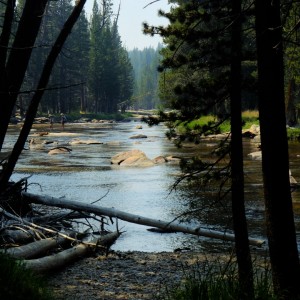While much of the focus at the national level in the U.S. is on hyper-partisanship and polarization, a less heralded story is the growing rise of collaborative networks that allow many people and organizations to work effectively on common goals. As Tom Atlee summarized here, these networks include multiple sectors (public, private, and civil society) and multiple stakeholders, and are at multiple scales (from local to global). New York Times columnists have recently taken note of this trend:
- David Brooks writes about “this strategy for community problem-solving that does an extraordinary job at restoring our social fabric.”
- Thomas Friedman, in his article “Where American Politics Can Still Work: From the Bottom Up,” writes about how Lancaster, PA dealt with a declining economy “by throwing partisan politics out the window and forming a complex adaptive coalition in which business leaders, educators, philanthropists, social innovators and the local government would work together to unleash entrepreneurship and forge whatever compromises were necessary to fix the city.”
To work in these networked coalitions requires expanding beyond the traditional management focus at the organizational level to working as an ecosystem. Each person and organization needs to recognize how their work  fits into a larger whole and how fragmented “parts” can be connected. What many discover is that as more parts of a community or system are connected and engaged, innovative solutions and other benefits emerge.
fits into a larger whole and how fragmented “parts” can be connected. What many discover is that as more parts of a community or system are connected and engaged, innovative solutions and other benefits emerge.
Here are some ways we help people work as an ecosystem:
- See the system – Every community or system one wants to change has its unique history, multiple issues intersecting, many players, and changing dynamics. The power of working in more collaborative ways is that we can access perspectives from many parts of a system or community…and learn how they interrelate and change over time. Conversation methods, such as World Café and systems mapping approaches, such as systemic constellations, allow people to develop a richer shared understanding of a complex system than any one person could alone.
- Engage multiple perspectives and the voices of those close to the ground – The Jemez Principles offer a set of principles for working with diverse groups to find common ground. One critical one is “let people speak for themselves.” The needs and voices of those most affected by the work need to be central as the various participants in a system consider how they can make it work more effectively. This requires building ongoing relationships that can endure over time, as changes get implemented, their impacts are experienced, and new needs and opportunities arise.
- Encourage self–organizing – Natural ecosystems do not operate with a strategic plan. Animals and plants do not have performance goals or accountability metrics. They play their role in the ecosystem, doing what they are here to do. Effective collaborations help people align around a shared goal and have the space and resources to allow them to contribute in their unique way toward it. For example, in a climate action network I work with, quarterly meetings helped participants combine their ideas on what was needed to make progress. At one meeting, it became clear that climate advocates needed to make a strong case for energy efficiency investments. One participant saw an area where research was missing that could help make the case. His organization had skills in this area and was able to find grant funding and staff to do this piece of work, and then share it back to the network of grateful advocates.
- Map relationships– Because we tend to focus on individuals and “parts,” we downplay the relationships between and among them. Making relationships visible can help people understand where their work fits into a larger system and see where the participation of people and organizations may be missing. Network mapping and quick maps are useful tools to illuminate these webs of relationships and information flows and strengthen collborations at multiple scales.
- Align work – The Boston Green and Healthy Building Network is a good case study of how a group of non-profits working for similar goals came together and assessed who was doing what. They discovered gaps and overlaps, and where they could align and focus their work more effectively.
- Adapting to change and learning together – In times of rapid change, we need to practice “collective sensemaking,” combining many people’s experiences and insights to gain a fresh take on what is changing and how to respond and innovate. With intentional design of work and well-crafted meetings, we can enable the “parts” of an community or network to stay connected, share information, combine what they are learning, and support each other’s work.
Each of these activities needs to be done with an emphasis on simultaneously developing strong trusting relationships and opportunities for individuals to “do what they do best and link to the rest” as Jeff Jarvis states, author of What Would Google Do?
We offer an in-person or on-line workshop on The Art of Working as an Ecosystem, where we share practical tools and processes to help people “see the system” and connect and cross-pollinate their work. Contact us if you’d like to learn more.

Nice Beth!
Looking forward to the workshop, Beth!